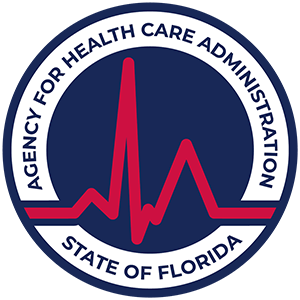Which Factors Can Increase A Teenager's Cannabis Use?
Learn the key factors that increase teen cannabis use, from peer pressure to mental health, and discover strategies to help prevent it.
According to the CDC, around 15% of teens 12-18 years old report having tried cannabis, and around 6% of them report using it daily. It tends to be more accessible than other drugs and is often portrayed in media that youth consume [1].
Teens may have a perception that because cannabis is legalized for adults in some parts of the US, it is safe. However, the teen brain is in a sensitive stage of development, with regions that control problem-solving, reasoning skills, motivation, and pleasure still growing. Cannabis use in adolescents can stunt this development and lead to long-term effects on their health.
There are several factors that can increase the risk of teens experimenting and consuming cannabis, including media influence, peer pressure, and underlying mental health challenges [2].
Continue reading to understand the rates of cannabis use in teens, how to recognize the signs, factors that influence their use, and strategies to talk to your teen about the risks of cannabis.
What is Cannabis?
Marijuana, commonly known as cannabis or weed, is a psychoactive drug produced by the Cannabis Plant. According to the Drug Enforcement Administration, it contains over 480 components, but the primary chemical that provides mind-altering effects is THC (delta-9-tetrahydrocannabinol) [3].
THC causes physical effects such as increased euphoria, relaxation, and lowered stress levels. There are many ways to consume cannabis, and some of the most common ways teens use it include:
- Smoking (pipe, joint, bong, etc)
- Vaping (cannabis leaves or THC wax)
- Edibles (e.g., weed brownies)
The Rates of Teen Cannabis Use
Cannabis use among teens has peaked over the past decade and is the highest it has been in the past 25 years. Teens are more likely to smoke marijuana than tobacco and many states have legalized marijuana for adults, which also increases accessibility to teens [4].
See below to understand the rates of cannabis in youth based on grade level as reported by the CDC [1]:
- 8th Grade: 6%
- 10th Grade: 15%
- 12th Grade: 21%
How Cannabis Impacts Teen Development
Teens are at an increased rate of experiencing adverse risks from cannabis. Use has been linked to mental health disorders such as depression and social anxiety [5]. Teens who have genetic vulnerabilities to psychiatric problems run the risk of experiencing symptoms of marijuana-induced psychosis. According to the CDC, earlier cannabis use is associated with an increased risk of schizophrenia [1].
Marijuana can stunt growth in parts of the teen brain that impact executive functioning, such as concentration, motivation, and attention span. One study shows cannabis use is linked to decreased academic performance [6]. Other long-term effects of cannabis use in teens include:
- Lack of energy
- Difficulty problem-solving
- Isolation
- Reduced motor skills
- Trouble focusing
- Sudden decline in school
- Increased risk of depression and anxiety
- Trouble holding down a job
Recognize Signs of Cannabis Use
It’s important for parents to recognize the warning signs if their teen is abusing cannabis. This makes it easier to provide early intervention and prevent problems from escalating. Warning signs include:
- Finding weed in their room/belongings
- Smelling weed in the home
- Bloodshot or glossy eyes
- Lack of motivation
- Social withdrawal
- Chronic cough
- Secretive behavior
- Depression
- Anxiety
- Talking about cannabis, consuming lots of content that is related to cannabis
- Finding pipes, rolling papers, lighters, or other paraphernalia
Factors That Increase Cannabis Use in Teens
Adolescence is a time of personal growth, identity exploration, and risk-taking. Sometimes, taking risks can help teens foster independence and identity development. However, some risky behaviors, such as using cannabis, can lead to long-term consequences on a teen’s well-being.
Researchers who study substance abuse and teenage development have explored what leads teens (some as young as 12) to first experiment with cannabis. By understanding the risk factors that lead to trying cannabis, it is easier to develop more effective prevention strategies.
According to the National Institute of Health, teenage cannabis use is influenced by a variety of individual, social, and environmental factors [2].
Individual
- Age: Older teens are associated with higher rates of cannabis use. While only 2% of 12-13 year olds report using cannabis, that number increases drastically for high school seniors (17-18), with 30% reporting use.
- Gender: Males are associated with higher rates of cannabis use at a young age. The reasons behind this are still being explored, but some suggest it is related to coping with stress or increased peer pressure from other males.
- Mental Health: Teens with higher levels of depressive symptoms or impulsivity are linked to increased rates of cannabis use. Youth who struggle with mental health disorders such as depression, bipolar disorder, anxiety, etc, may turn to cannabis to cope with distress.
- Previous Substance Use: Among 14-18-year-olds, teens who drink or use tobacco products are associated with earlier cannabis use.
- Low Self-Esteem: Teens who struggle with negative perception of themselves may turn to drugs and alcohol to relax, feel more confident, and increase their socialability.
Social
- Parental Supervision: Decreased levels of parental supervision are associated with higher rates of cannabis, alcohol, and tobacco use in teens.
- Family History/Influence: Teens who grow up in a home where substance use is normalized are associated with trying cannabis at a younger age.
- Peer Influence: Teens who have friends or siblings who use cannabis are linked to trying it at an earlier age.
- Dynamics In The Home: Teens who come from homes with conflict, instability, or violence are more likely to experiment with cannabis at a young age.
Environmental
- Economic Status: Teens who come from lower-income homes are more likely to experiment with marijuana during their youth.
- Social Engagement: Teens with more connections to their peers, teachers, and community are associated with lower levels of cannabis use. This highlights the importance of involving teens in extracurriculars, community events, school programs, etc.
- Neighborhood/Community Influence: Teens who come from communities with increased violence, substance abuse, or conflict are associated with cannabis use at a younger age.
Protective Factors Against Teen Cannabis Use
Although there are several risk factors associated with early cannabis use in teens, there are also protective factors that can prevent them from turning to cannabis or other substances. Ideally, parents should aim to lower the risk factors and increase protective factors to prevent their teens from abusing cannabis. Some of the factors that can protect teens from experimenting with cannabis include:
- Higher levels of parental supervision
- Increased self-esteem
- Positive relationships with family, peers, community, etc
- Engagement in school, sports, or other activities
- Access to mental health services
- Coming from a community where there are lower levels of violence or conflict
Talking With Your Teen About Cannabis Use
Understanding the protective factors above can help lower the risk of youth using cannabis. However, teens are curious and may still experiment. Having open conversations in the home around the risks of substance use and the consequences on their health can be helpful for teens.
Some strategies to discuss cannabis use with your teen include:
- Ask open-ended questions. What do they already know about cannabis? What is their perception of cannabis use?
- Provide them with the facts about smoking weed. But don’t use scare tactics.
- Actively listen to them. If they express curiosity, ask questions to understand why and what they want to know.
- Explain to them why some adults use cannabis for medicinal reasons.
- Discuss any open experiences you have had with cannabis. Be honest about your experiences.
- Discuss the risks of buying weed off the street. (e.g. it can be laced with other drugs or chemicals that can cause severe health consequences)
- Explain the association between cannabis use and increased mental health problems.
- Set rules and boundaries around substance use.
- Balance respecting their independence while ensuring you know who they spend time with and where they are going.
Residential Treatment for Teenage Cannabis Abuse
Lotus Behavioral Health helps teens recovering from substance abuse & mental health disorders recover and gain the skills they need to return to their communities. Our comprehensive treatment programs take a family-first approach to help teens build a support system that supports their long-term recovery from cannabis abuse.
Sources
[1] Cannabis and Teens. 2024. CDC.
[2] Factors associated with cannabis use in early adolescence. 2023. National Library of Medicine.
[3] Drug Fact Sheet. Department of Justice. Drug Enforcement Administration.
[4] Marijuana and Teens. 2023. American Academy of Child & Adolescent Psychiatry.
[5] The Relationship between Cannabis Use Disorders and Social Anxiety Disorder in the National Epidemiological Study of Alcohol and Related Conditions (NESARC). 2023. National Library of Medicine.
[6] An Evidence-Based Review of Acute and Long-Term Effects of Cannabis Use on Executive Cognitive Functions. 2012. National Library of Medicine.














.svg)








